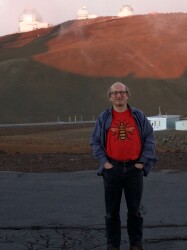BibTex format
@article{Clements:2017:10.1080/00107514.2017.1362139,
author = {Clements, DL},
doi = {10.1080/00107514.2017.1362139},
journal = {Contemporary Physics},
pages = {331--348},
title = {An introduction to the Planck mission},
url = {http://dx.doi.org/10.1080/00107514.2017.1362139},
volume = {58},
year = {2017}
}

